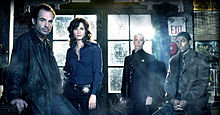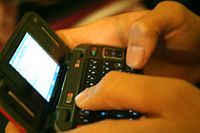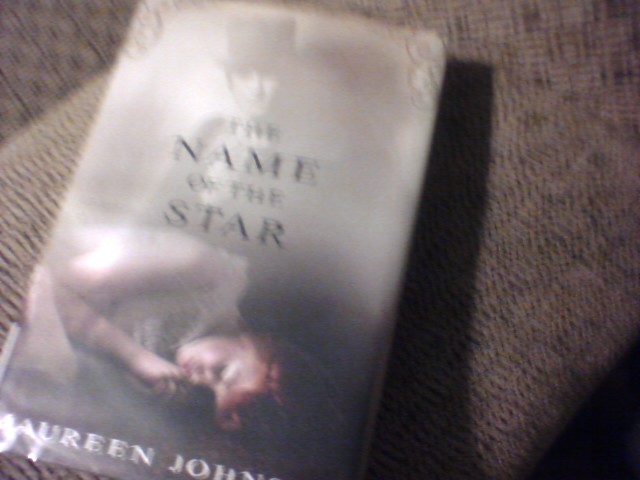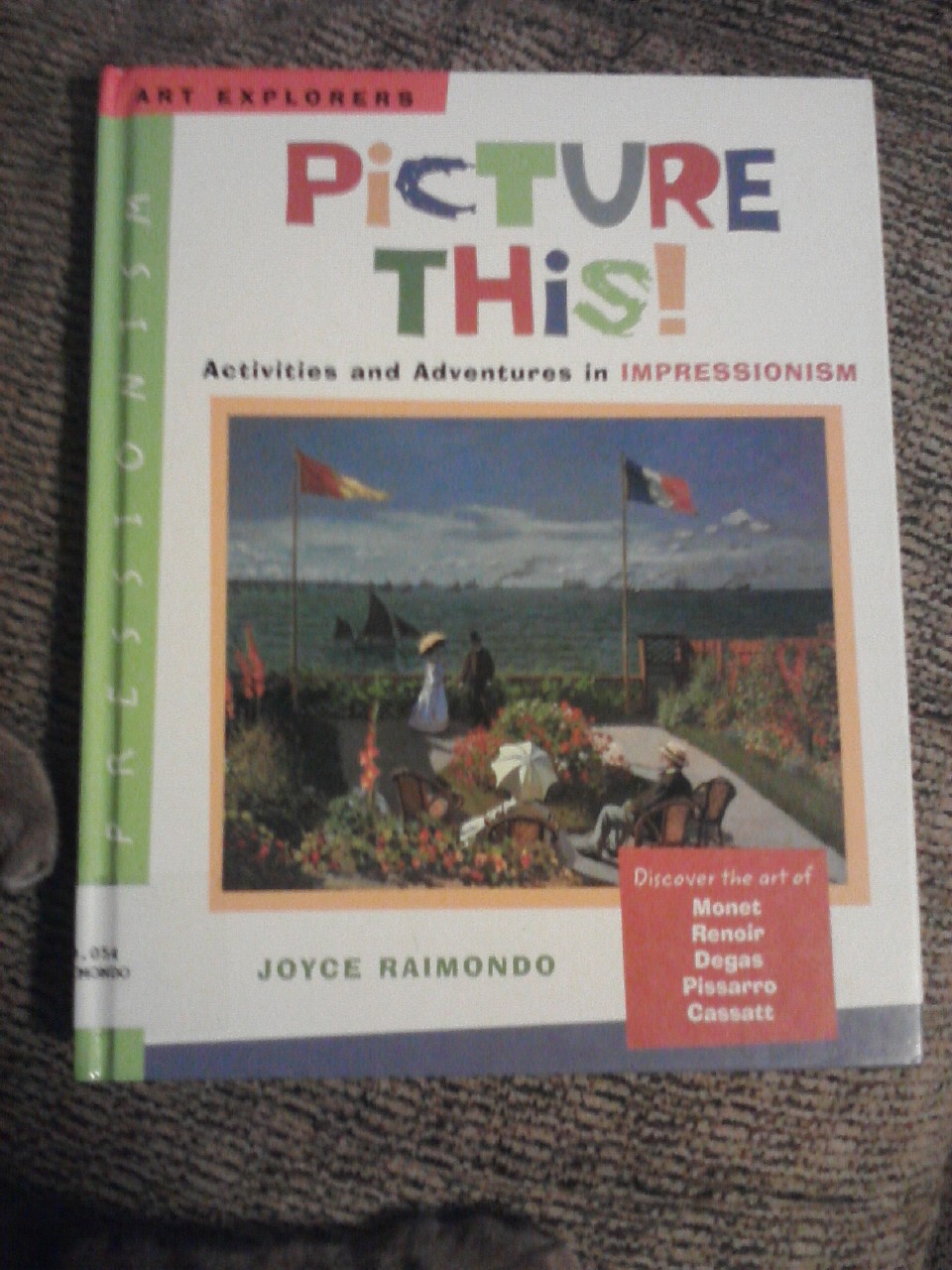Storm Front
I haven’t finished Jim Butcher’s Storm Front yet, but I have to by Monday as I’m exchanging books with a friend during our monthly Mom’s Night, and I must say that I’m a bit disappointed already. I was absolutely in love with The Dresden Files TV show and was really looking forward to that kind of magic in the books. Instead, I’ve found some unbelievable monologue that’s a bit annoying, and sounds nothing like a grown man might think.
That said, my friend tells me that I need to expect this; that the books get better with time, and that I just need to hang in there for the next and the next one after that… so I will. She has excellent taste—she’s my friend, after all; just kidding!—and I trust her judgment.
We have been swapping books for months now and she trusted me enough to stick through Fablehaven, so I’ve got to return the favor. Plus, it’s Dresden! I can only hope that one day my books will be successful and I’ll have readers assuring “newbie” fans, “Stick with her, she gets better!”
In the meantime, the story itself is good and compelling enough for me to read through anyway, so I will continue and await the next book and what it brings. If the show is anything like the book—and so far, not even the characters seem like the ones in the book, which is really no surprise; aside from the main trio in the Harry Potter films, are they ever?—I am excited to meet many of the creatures and council that were present in the series.
Disassociated conscience of a nation
I read a letter in the local paper—I hate to read them because they often just make me mad; I live in the Bible Belt, after all—the other day that made me actually agree with someone I probably would never have agreed with had I met him in person. I didn’t agree with what he was saying—that our constant technology use is the cause of violence in our culture, not guns—but I did agree with the sentiment. I think our constant use of technology may be separating us farther from each other, causing us to become less compassionate and human as we bond via the Internet.
I am a huge Internet proponent, of course. I think it should be free—SOCIALIST! I hear it already; pshaw, I care not!—and I think it’s a great equalizer when it comes to education, job opportunities and even simple connections around the world. If used well, it could create much more educated societies, and its uses are limitless.
That said, I think that its use as a social instrument should be kept to a minimum. I don’t think that the Internet itself—or texting, or other forms of technology—are to blame for shootings (though the woman whose baby died while she played Farmville does make me wonder). We’ve had shootings before technological advances; in fact, bullets were once a technological advancement! But I do think that we are growing apart as we rely more heavily on our techie instruments for personal connection.
I remember being with friends and family before the texting at dinner, the app sharing on Thanksgiving, the click-click-click of instant messaging and Guitar Hero as background noise to a birthday party. To me, those were sort of good old days—though I don’t believe in good old days, not really—when we could all enjoy one another’s company and focus on the now rather than the pixels.
I’m not sure if this will ever improve, though. I can’t see people giving up their Facebook—or especially their texting—anytime soon. But I could see us all making a more concentrated effort to enjoy one another’s company when we are together, if we only gave it a try. I like the cell phone games where you put your cell phone down at lunch (some people play where you have to pay if you answer or look at yours first!), and I like simply making no cell phone rules during family gatherings. What other ways can we stay connected as human beings (and did you ever think we’d need an answer to that question)?
Fired over a grapefruit
The other day, my husband, who works in the grocery department of a major worldwide store, was threatened. Again. This time, it was because his store did not carry grapefruit.
He tried to explain to the irate woman that they had never carried it, that the store wasn’t a full superstore, and that he was sorry. She accused him of—get this—hiding the grapefruit from her because he didn’t want her to have it. I guess this was better than the old woman who threw a package of lunch meat at him—or, at least, it would have been, until the woman threatened to have him fired over grapefruit.
She informed him that it was somehow in her power to have him thrown out on his butt from his job because he couldn’t produce grapefruit out of thin air. It just amazes me that someone could be so flippant and inhumane like this over a piece of fruit! Did she not consider that he supports a family, that he’s trying to get out of debt and buy a house, that he worked hard to move up to this position? Obviously he knew she had no such power—in fact, I was more troubled over her ranting than he was—but it’s distressing to have someone try to threaten your whole livelihood over a piece of fruit nonetheless.
Maybe it’s because I’ve worked in fast food and I know how hard it is to deal with irate people, but I don’t understand why we treat each other this way. It’s absolutely astounding that we would equate produce above a human being!
Whenever I use a store, restaurant, or other service where someone is going to help me, I always make sure to make eye contact, smile and be friendly. I leave tips every time I can—I don’t think you should dine out unless you can, unless it’s fast food or something—and sometimes I even leave notes to thank people who were especially kind. Now, when someone who works is irate to me, I can understand getting your feathers ruffled. It’s their job to help, after all, and it can be hard to get a job these days. When my husband was laid off, it took him nearly a year to get another job—and he works hard every day to keep it. So when someone is grumpy when I try to be nice, I do get a little peeved.
But then again, they’re probably irate because someone just threatened their job over a bag of frozen peas.
Positive reinforcement for kids
How do you perform at work, at college, or anywhere else when you have someone looming over you declaring “Good job!” every time you scratch a pencil, burp or sneeze? You probably don’t have anyone doing this, but the average kid seems to. I feel worse for kids who get zero attention from their parents, of course, but this whole “Good job!” crap has to stop.
For one thing, our kids know it when we are telling them BS. They might scribble and see what we say just for the hell of it—I know my daughter has!—and when they get upset declaring a masterpiece a train wreck, we step in and say, “No, it’s beautiful!” They. Know. Better. Art is in the eye of the beholder, sure, but it’s their work; let them determine its value.
I want my daughter to have an internal compass that guides her actions, something she can be accountable for by herself. I don’t want her peeking over her shoulder for validation every step of the way to hear “Good job!” for every move she makes—like I desperately wanted as a child.
I don’t only want her to develop a sense of right and wrong that she uses as her guide rather than my voice; I also don’t want her growing up feeling as if she has to please me. I want her to please herself. That said, I still have trouble breaking the automatic habit, and continue to work on it every day.
For more information about the harms of excessive praise and alternative language to use, check out Good Job! And Other Things You Shouldn’t Say or Do.
Free weekend fun
The winter months are upon us here in the Midwest, and though our first snow of the year is melting, there’s certainly more to come. We’re always on the lookout for cheap things to do indoors with our family, so I thought I’d take a moment to share a few of our ideas with you to share with your family.
Lowes and Home Depot workshops: We like to attend these free workshops whenever we can. The stores provide free kits to build things, from race cars to bird houses to seasonal gifts, for free. Home Depot even provides paint for you to glam your project up! Not only do they cost you absolutely nothing, they also give you lots of freebies. We’ve gotten goggles, aprons and certificates, in addition to the monthly projects themselves! My daughter also gets a pin or a patch for her aprons.
Bass Pro Shops: We haven’t attended one of these yet, but I hear they have family events going on just about every month with all kinds of games and activities for kids to do. The closest one to us is a bit of a drive, but we might try it out sometime.
Michaels' Make and Take Projects: Select Michaels stores offer free workshops for kids on some weekends. You often have to buy the materials or another product to participate, but it’s generally pretty cheap. You can also sign up for a Jo Ann’s craft store class for half-price during open house once a month.
Garden Club: This year we are going to try to attend some St. Louis Garden Club events. They meet once a month at various locations, and it’s also free. Check with your local metropolitan area to see if similar city-wide programs are available for the public.
Library Programs: Speaking of the public, the library—and the rec center—are our favorite places to go for free! We do pay a monthly membership to the latter, but it pays for itself in a single week of use. You can swim, play sports, read books, attend craft workshops, and do so much more. I’m telling you, these are gold resources that many people simply overlook.
Bounce Places: If you have a local Monkey Joe’s, Bounce U, or other similar place, you know these are great for getting all of that winter energy out! They cost nearly the same, but at Monkey Joe’s you can stay all day, while at Bounce U you usually have to make a reservation f (and it’s pretty affordable if you buy a pass for multiple discounted sessions) or open play to stay for only an hour and a half or so (which is a good amount of time, of course). Also, MJ’s is for kids under 12, while Bounce U welcomes all ages—which is good for parents who want to bounce, too!
The Name of the Star
During the first early wee morning’s light of the New Year, I cuddled up in our big reading chair while the rest of the house slept and treated myself to a gorgeously funny and thrilling young adult book. Maureen Johnson’s The Name of the Star is a gothic ghost story set in modern day London, and is centered around a teenager from New Orleans named Rory and her newfound supernatural abilities while studying abroad.
I am new to Johnson’s work, and just by looking at her cover I thought we could have been friends in high school. I have a feeling she’s just as irreverent and caustic, on occasion, as I once was—and if she wasn’t, well, her characters can be! Their personalities drew me in so quickly that I didn’t even notice a teen element. Dialogue flowed naturally, and if it wasn’t humorous, it was still entertaining.
I won’t give away the story itself, but I will say the only thing I didn’t like about it was that the villain did the whole “monologue” thing to explain his point of view. I would have much rather had details be released through the story so we readers could figure it out, too—those kinds of thrillers are so much more fun, especially when it’s a tiny, trivial detail that makes you go, “Oh!” Even so, it was so well written, engaging, and purely fun to read that I really didn’t care that much.
There are romantic elements, drama between friendships—but not annoyingly so—and other teen lit elements you might expect to be present, but the gloomy mood of London during troubled times is also captured so well here, and I would read a book featuring Rory again just to hear her goofy one-liners and Southern logic.
It’s a very unique idea for a story with such a wonderfully twisted ending. It’s not terror-twisted—although there are a few moments in this book that will make your gut clench, no doubt, particularly one involving a camera—but rather inspired, and, dare I say, open for a sequel?
I would love to revisit these characters once again in the future. I wonder if Johnson has plans on revisiting them, too? If so, I’d buy the sequel immediately upon release. And in the meantime, I hear she has several other books just waiting for me to check out while I wait and wonder...
Picture This!
Last week I wrote about teaching an easy Monet art class, and I held another one of these classes this week. It was so much fun, and the kids really got a kick out of the watercolor paint. One day I’ll have to get the watercolor tubes and some actual watercolor paper to let them experiment some more, if they choose to do so.
While I searched for Monet books at the library, I ran across this wonderful book called Art Explorers: Picture This! Activities and Adventures in Impressionism. Isn’t that the most inviting title of a book you’ve ever heard? The book cover explains that within it, you will find ways to discover the art of Monet, Renoir, Degas, Pissarro and Cassatt. The first few pages are about impressionism and explain how you can discuss the styles and meanings with your children.
Next, there are fun projects to do as a family—from mixing color wheels, learning about warm and cool colors and more. This part of the book is more focused on assessing what you see than making a lot of art, but you can obviously do as much or as little as you like on your own.
The book goes straight into art by Monet, depicting some of his famous paintings and asking several good questions about the art to help children—and adults!—learn how to evaluate it. If your child is not interested, I would move on to more hands-on activities; but if he or she would like to discuss art, you could spend a lot of time with these discussions. After the questions, there are several pages of cool art projects to do in the style of Monet, including examples of other children’s art pieces. My daughter especially liked these, which she thought were much like her own in some ways, some ways not.
Throughout the book, you get to experience pointillism, abstract art, seasonal collages, and much more. Different mediums, such as tissue paper, are also introduced, though I think painting is probably the best medium for exploring, well, painters. Get as creative as you like, of course; if your child wants to make 3-D windmills, go for it! But if your child is seriously into painting abstract art or impressionism in general, you can encourage it by supplying plenty of materials (the good ones, not the kiddie ones!) and texts like this one for them to browse through and learn more about their interests.
Our Family Tree
I have been searching for a good book about evolution that doesn’t go so deep it gets confusing for my kiddo. She’s already a big fan of Lucy—we saw a replica of her at the St. Louis Science Center—so I wasn’t too worried, but I still hadn’t been able to find anything I really liked until I came across Lisa Westber Peters’ book Our Family Tree: An Evolution Story. Luckily our library had a copy, and I instantly fell in love with the book.
It starts out with a family at the beach, contemplating how much we have changed since life on Earth began. Illustrator Laruen Stringer’s gorgeous artwork depicts tiny microscopic beings filled with genetic code—DNA and other terms are explained at the back of the book if you wish to read them as well, followed by slow, slow changes. The illustrations and lovely prose—slow and scientific, just like the evolutionary process within the story and life itself—continue throughout the whole book this way, and we get to see glowing jellyfish and other beings, volcanoes erupting, and the first creatures with a backbone develop.
This is where the author starts adding human body parts, piece by piece, explaining where they came from as they slowly, incredibly, developed into what makes us who we are today. I’m 30 years old and the descriptions and artwork amazed me; I can only imagine how it would amaze young people across the country, particularly in schools where evolution is taught alongside creationism as “one theory.” It’s a lovely gift for the small scientists in your life—and the big ones, too.
Rush Limbaugh dubbed "Misinformer of the Year"
2012 may have been the year when Rush Limbaugh finally decided that "there's no such thing as bad publicity" is not strictly speaking true. (Or maybe not - he certainly makes a lot of hay out of his "outsider status.") He was nominated "Misinformer of the Year" for his bad behavior during and after the Sandra Fluke incident, his constant downplaying of the many misogynist episodes by other Republicans that occurred during the year, his insistence right up until the last minute that Romney would win, and more.
Blocking your knitting in a small space
Over the holiday I found myself having to wash and block a sweater sized for an adult man. This was a challenge, because not only do I have a small home, I also have two cats who love to make mischief. Typically when I have something large, I try to hold off on washing it until summer, when I can lay it out on my deck in the sun. (You're not supposed to do that, leave your knitting in the sun, but I don't have a lot of options.)












